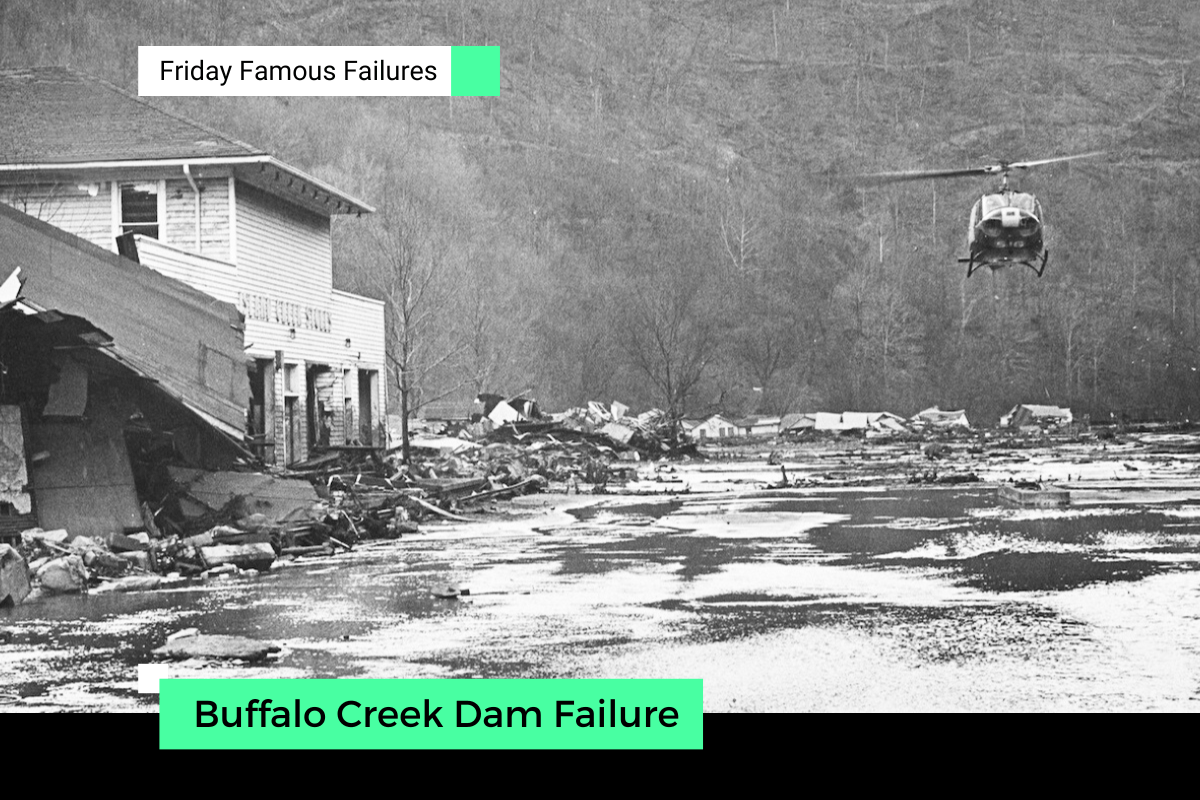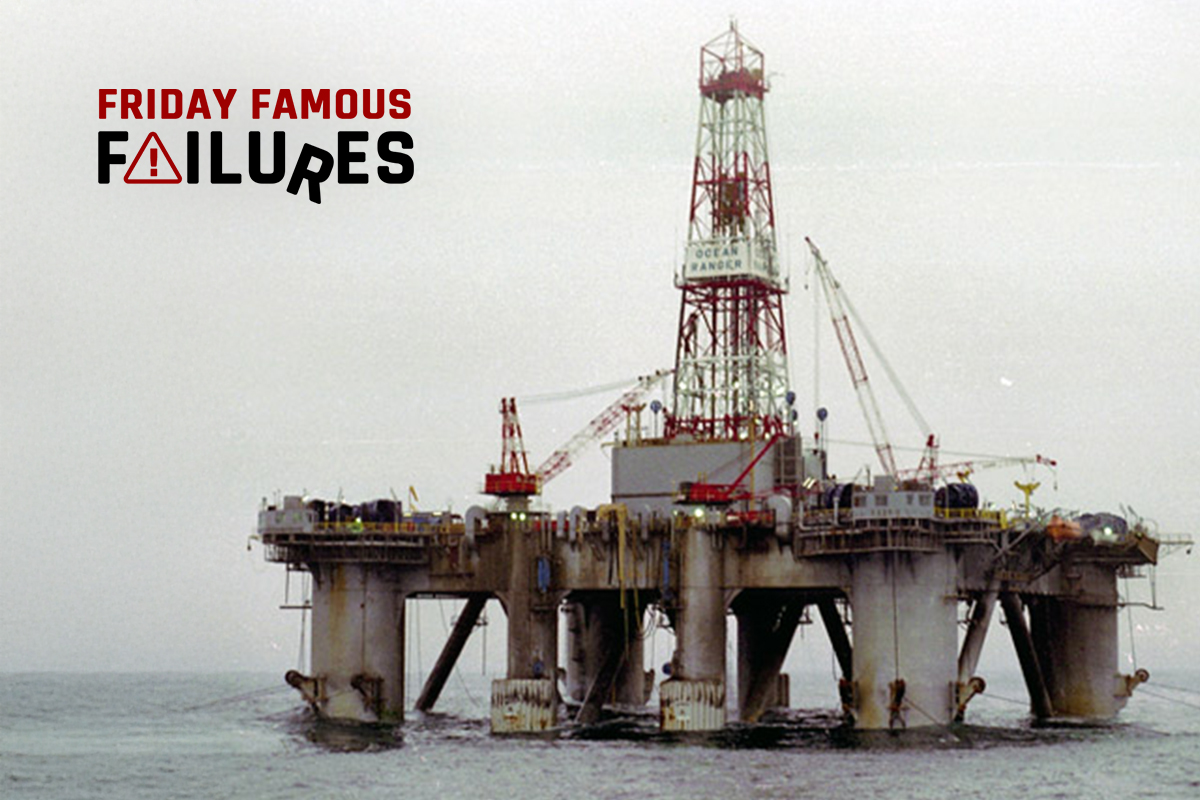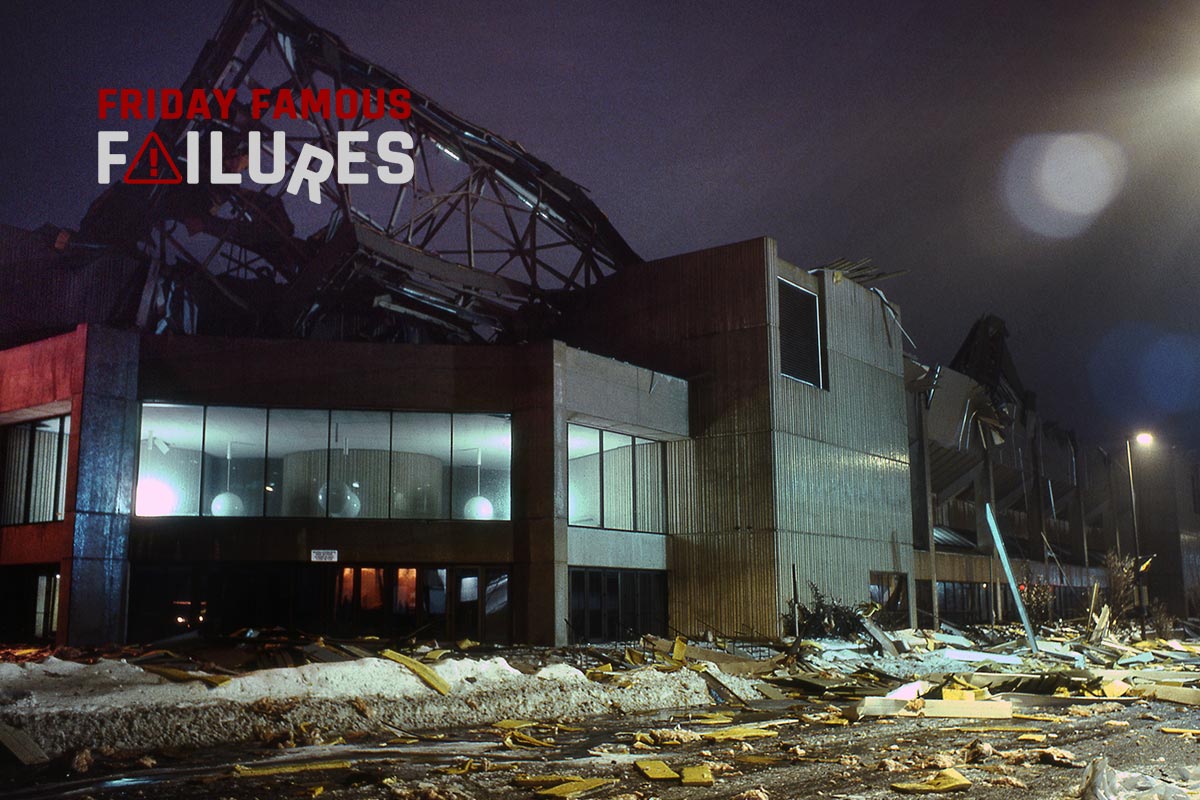On the days preceding February 26, 1972, Buffalo mining officials kept an eye on a local coal refuse dam in Logan County, West Virginia, as heavy rain continuously fell. The company measured water levels every two hours over the night of the 25th and alerted officials in the nearby communities of the increased risk of flooding. However, when two sheriff’s deputies arrived to help with evacuations, the company sent them away; none of the local inhabitants were warned. Yet despite the lack of information, some residents sensed the danger and moved to higher ground.
At 8:00 a.m. on February 26, heavy equipment operator Denny Gibson noticed that the water had risen and the dam was “real soggy.” Just five minutes later the dam collapsed and approximately 132 million gallons of black wastewater rushed through Buffalo Creek Hollow. In a matter of minutes, 125 people were dead, 1,100 injured, and over 4,000 were left homeless.
What caused this disaster?
The Buffalo Mining Company operated five underground mines, a strip mine, and two auger mines near Buffalo Creek in West Virginia. All of the coal from the mines was processed through a central preparation plant. The plant operated two shifts, five or six days a week. The plant processed about 5,200 tons of run-of-mine (raw) coal a day, which generated 1,000 tons of refuse. The refuse was removed from the raw product and transported to a storage bank. Much of the refuse was then used to make retaining dams for the processing plant’s wastewater. Between 1964 and 1970, three retaining dams were constructed.
In the week prior to the dam failure, Logan County experienced heavy rainfall; over the five preceding days, 3.84 inches of rain were estimated. This amount of water was augmented by snow melted by the rain and joining the runoff. During this period, all the mines on Buffalo Creek were active and generating wastewater. A coal mine inspector and a company safety engineer inspected the refuse bank and retaining dams three days prior to the collapse, on February 22, and deemed them to be in satisfactory condition. The inspector noted at the time that the wastewater was roughly 15 feet below the top of the upper dam. Nevertheless, a superintendent of the company’s stripping operations continued observation of water levels. By late afternoon on February 25th, the superintendent was concerned enough to visit the dam at two-hour intervals. Many other people were concerned as well, and afterward noted they had regularly checked on the dam leading up to its collapse. Yet, not one actually witnessed the failure of the upper dam. Many did, however, report hearing explosions when the water reached the refuse bank which was still partially burning from the coal processing operation.
Two commissions investigated the disaster to determine the cause and responsible parties. The first, the Governor’s Ad Hoc Commission of Inquiry was appointed by then-Governor Arch Moore, Jr. and was extremely sympathetic to the mining company. When the United Mine Workers asked to have a coal miner be added to the commission, the Governor refused. Then, a separate citizen’s commission was formed to provide an independent review. After investigation, the Governor’s Commission found no serious fault in any actors and called for new legislation to prevent future dam collapses. The citizens’ commission report, however, concluded that Pittston Coal Company was guilty of murdering at least 124 people because of their blatant disregard for standard safety practices.
The third dam, built behind and above the previous two dams, rested on a bed of coal silt and sediment that settled from the wastewater and remained on the bed of the reservoirs behind the second dam. This was an inadequate foundation for the dam, though it would have been more difficult and expensive to clear the sediment before constructing the third dam. The flood began when dam three failed, and then the water from its reservoir overwhelmed and destroyed dams one and two.
In testimony before the Ad Hoc Commission, Mr. D.S. Dasovich, V.P. of Buffalo Mining Company, stated that the method of constructing Dam No. 3 “. . . is common practice throughout the coal mining regions.” No engineering plans were ever made for the construction of the impoundment. The only plan was Mr. Dasovich’s sketch made on February 26, 1968. Mr. Dasovich stated in reference to the design of Dam No. 3, “I wouldn’t even begin to be able to engineer a thing like that. It has no . . . I know of no formula or any such method of so-called designing it.”
The citizen’s commission pointed out the flaw in dam three as the cause of the disaster, holding the company responsible for the disaster. Additionally, the chair of the citizen’s commission called for the legislature to outlaw coal strip mining, which he claimed was a potential cause of the disaster due to the creation of so much refuse and wastewater. Pittston officials rejected these conclusions but offered no alternative fact-based explanation, calling the flood an “Act of God” and saying the dam was simply “incapable of holding the water God poured into it.”
A circuit court grand jury failed to return any indictments against Pittston despite the alleged violations. In May 1972, Governor Arch Moore, as he ran for a re-election campaign, proposed ten redevelopment projects for Buffalo Creek that would aid victims of the flood. Few of these developments were completed on time and most never materialized. Instead, the Federal Department of Housing and Urban Development set up temporary mobile home communities for those left homeless by the dam collapse. Of the 750 projected public housing units, only 17 model homes and 90 apartments were ever built.
The disaster at Buffalo Creek reawakened the Mine Health and Safety Administration to the importance of enforcing federal regulations. At the state level, the West Virginia Legislature passed the Dam Control Act, providing oversight and regulation of all dams in the state, but funding was never allocated to enforce the law.
Numerous lawsuits were filed in response to the disaster. In the largest class-action suit, 600 survivors and family members of victims sued Pittston for $64 million. The plaintiffs settled out of court in 1974 for $13.5 million; each individual received an average of $13,000 after legal costs. Lawyers for the plaintiffs from the firm Arnold & Porter of Washington, D.C., donated a portion of their legal fees toward the construction of a new community center. The state never built the promised center.









Never rely on politicians or government officials to follow through with any promise.
If a state is small and relying on a too one-sided economy of mining, the responsibilities of enforcing liability and safety laws applied by the mining industry and supporting the state’s economy become a conflict of interest. The state of West Virginia should have withdrawn because of this conflict and kicked the investigation to a higher level: the Federal level.
Hell-o Johnstown! Sad enough that people were injured and some died, but the actions of the State or lack thereof just added salt to the wounds.